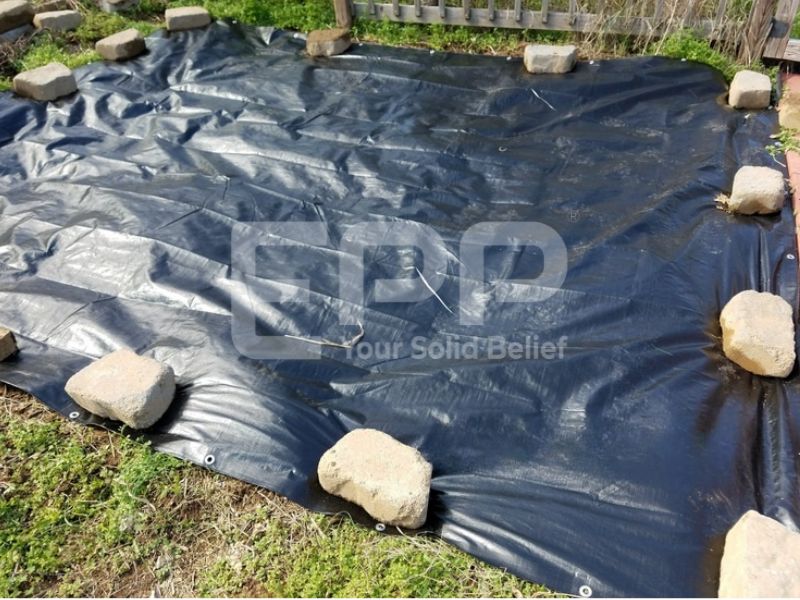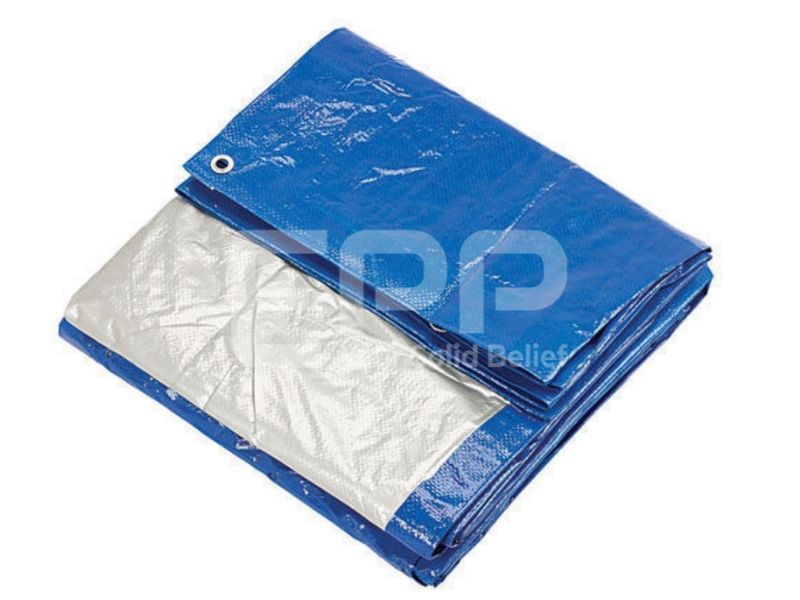Ground cover tarp is an effective solution for various gardening and landscaping needs. With the increasing demand for effective weed control and moisture retention, many gardeners wonder if a ground tarpaulin can replace traditional landscape fabric. This article will explore both options, their benefits, and where each might be best suited.
What is Ground Cover Tarp?

A ground cover tarp is a versatile, durable covering designed to protect the soil and plants while preventing weed growth. Typically made from materials like polyethylene, these tarps come in various sizes and thicknesses, including large tarpaulin covers and round tarpaulin covers. Ground cover tarps are particularly useful in gardens, construction sites, and agricultural fields where soil protection is essential.
These tarps offer several advantages, such as water permeability, UV resistance, and durability. They can effectively block sunlight, which is crucial for preventing weed growth while allowing moisture to reach the soil. Additionally, tarps for ground cover are available in various colors and weights, making them suitable for different applications, including gardening, landscaping, and even as a cover tarp for outdoor equipment.
What is Landscape Fabric?

Landscape fabric, often referred to as landscape cloth, is a geotextile material specifically designed for use in gardens and landscaping projects. This fabric is typically made from woven or non-woven polypropylene, allowing for water and air penetration while preventing weed growth. Landscape fabric is commonly used in flower beds, vegetable gardens, and pathways to suppress weeds and maintain soil health.
While landscape fabric is effective in many situations, it has its limitations. Over time, soil and organic matter can accumulate on top of the fabric, making it less effective and potentially leading to weed growth. Additionally, landscape fabric can be more expensive than ground cover tarps, which raises the question of whether it is always the best option for all gardening and landscaping needs.
Pros and Cons of Using Ground Cover Tarp

Pros
- Cost-Effective: tarpaulins are often less expensive than landscape fabric, making them a popular choice for budget-conscious gardeners.
- Durability: With proper care, ground tarp sheet can last for several years, providing long-term protection for your garden.
- Versatility: Available in various sizes and colors, these tarps can be used for multiple applications, including as a log cover tarp or plastic cover tarp.
- Easy Installation: Ground cover tarps are typically easier to install and remove than landscape fabric.
Cons
- Limited Air Permeability: While some ground tarp allow water through, they may not be as breathable as landscape fabric.
- Aesthetic Concerns: Depending on the material and color, Tarpaulin may not blend as seamlessly into the landscape as fabric options.
Pros and Cons of Using Landscape Fabric
Pros
- Water and Air Permeability: Landscape fabric is designed to allow water and air to flow through, promoting healthy soil and plant growth.
- Effective Weed Control: When installed correctly, landscape fabric can effectively suppress weed growth for several years.
Cons
- Higher Cost: Landscape fabric is generally more expensive than ground cover tarps, which may not be feasible for all gardeners
- Deterioration Over Time: Exposure to sunlight can cause landscape fabric to break down, leading to reduced effectiveness and the need for replacement.
Situations Where Ground Cover Tarps May Be Preferred

Ground cover tarps may be preferred in various scenarios, including budget constraints. For gardeners looking for an affordable solution, ground cover tarps offer a cost-effective alternative to landscape fabric. They are also ideal for temporary solutions; if you need a cover for a construction site or garden area, a ground tarp sheet is easy to install and remove.
In heavy-duty applications, such as commercial landscaping or construction, ground tarpaulins provide the necessary protection against harsh elements. Additionally, for those requiring a cover tarp for seasonal projects—like protecting plants during winter or preventing weeds in the summer—ground tarp cover are a flexible option that can adapt to various needs.
Conclusion
In conclusion, a ground cover tarp can effectively replace landscape fabric for weed control and soil protection in many gardening and landscaping applications. With their cost-effectiveness, durability, and versatility, ground tarpaulin are an excellent choice for various situations. If you’re looking for the best tarp or landscape fabric, contact EPP Vietnam for quality products that meet your gardening needs. Whether you need a large tarpaulin cover or a specialized garden cover tarp, EPP Vietnam has got you covered!

